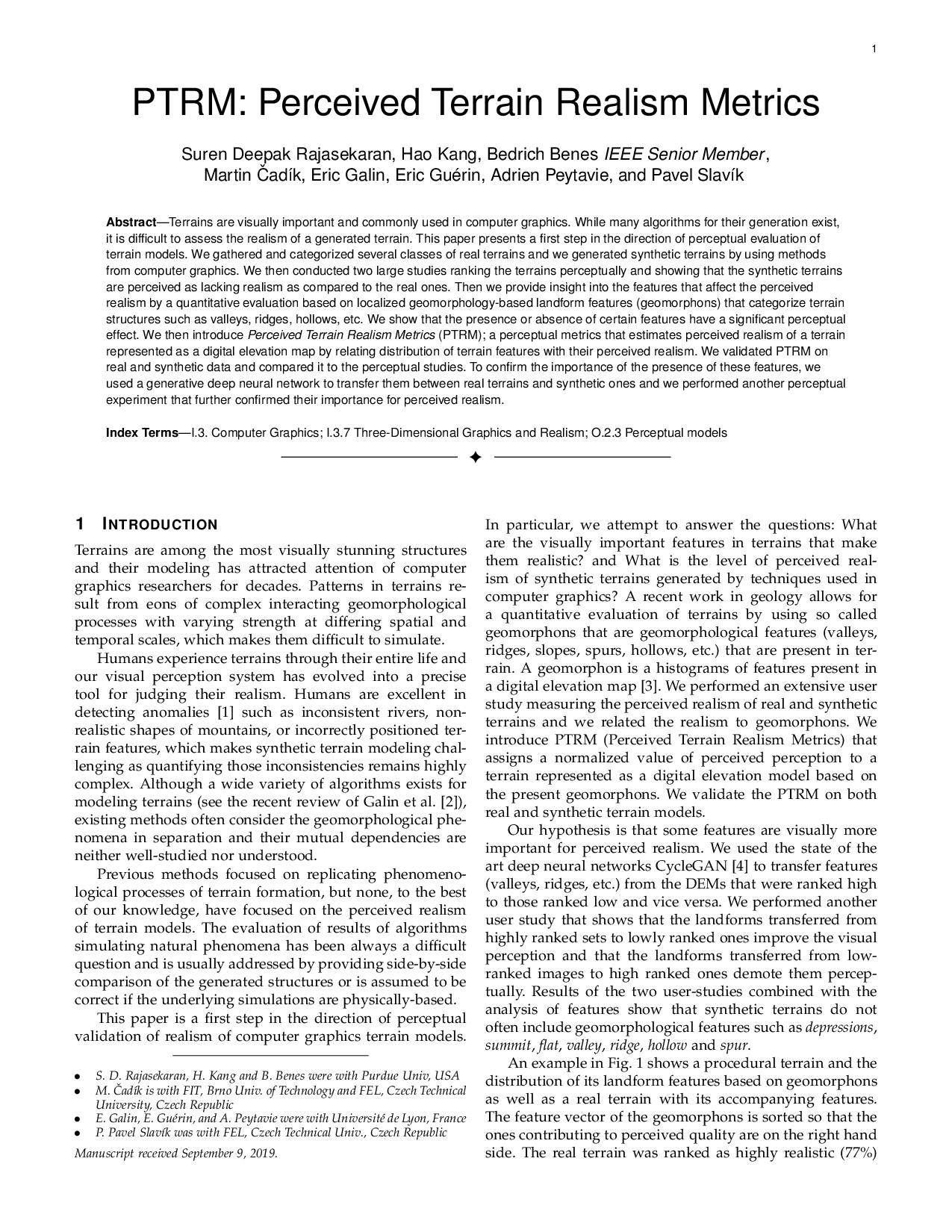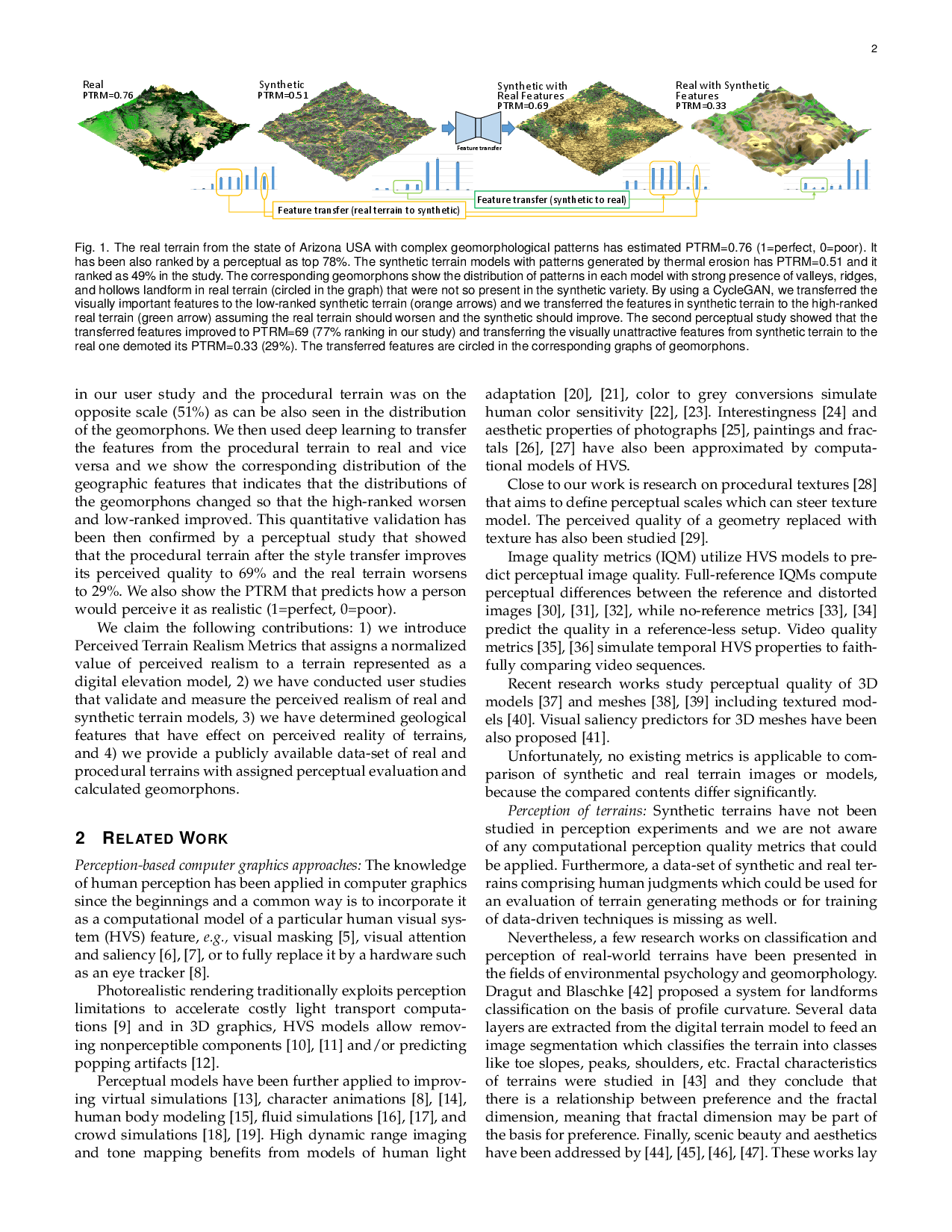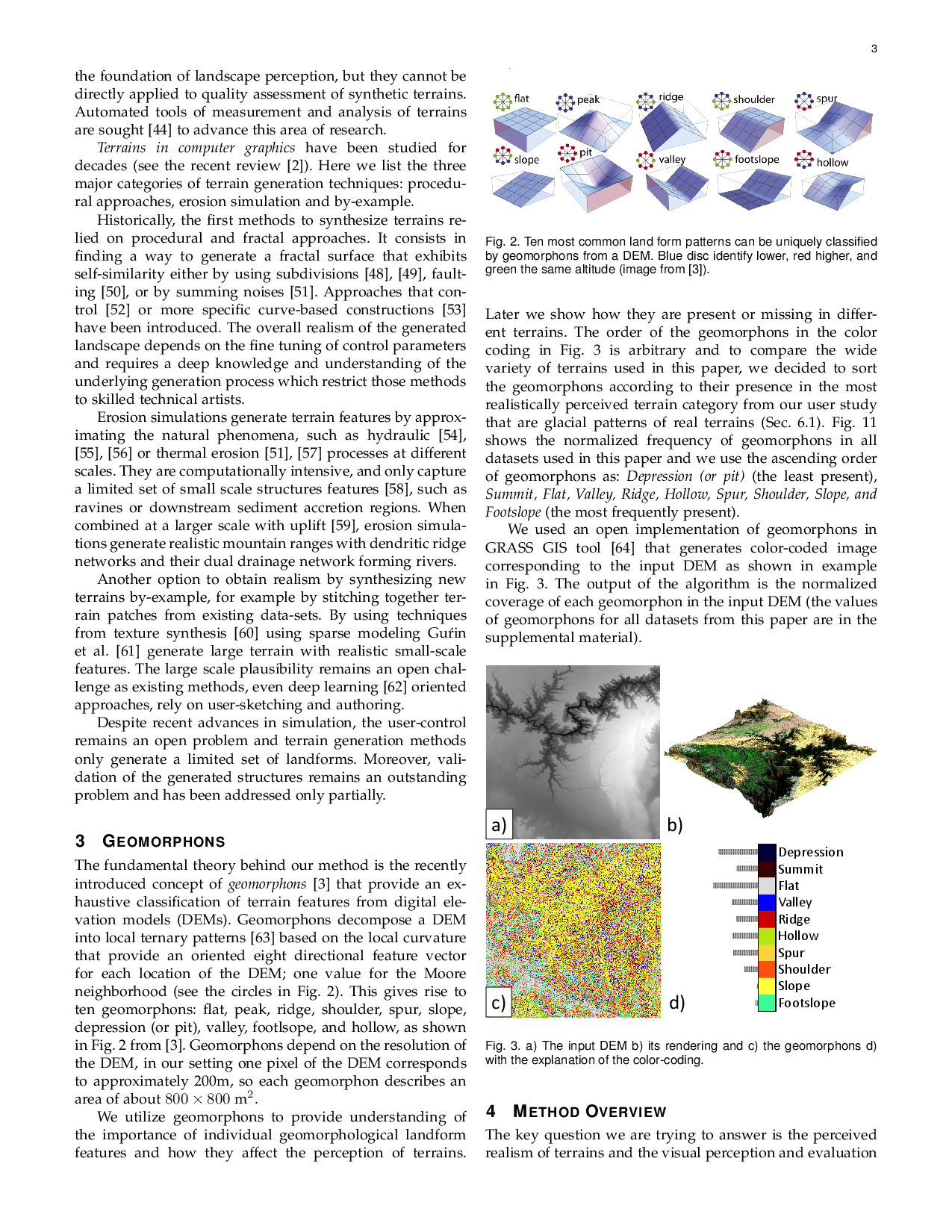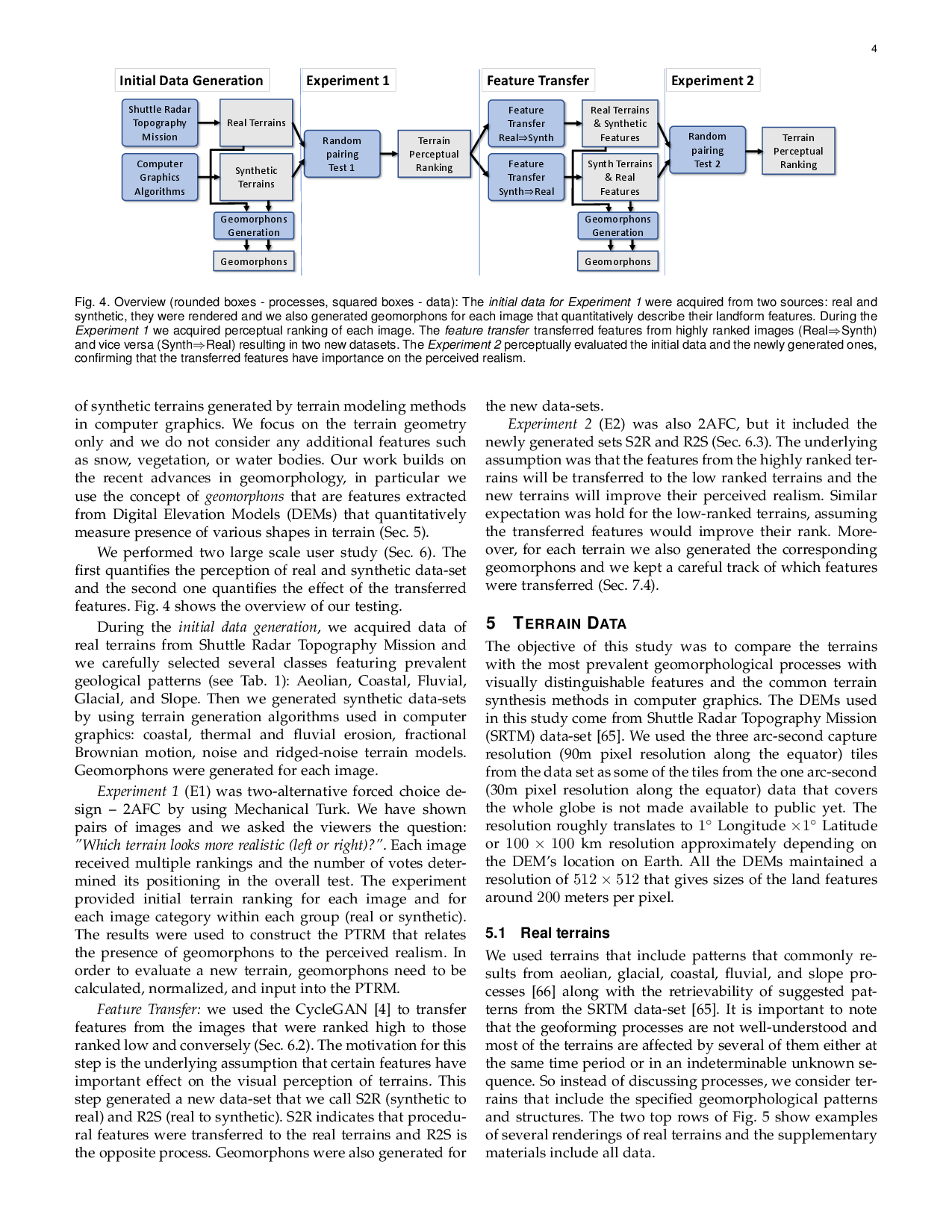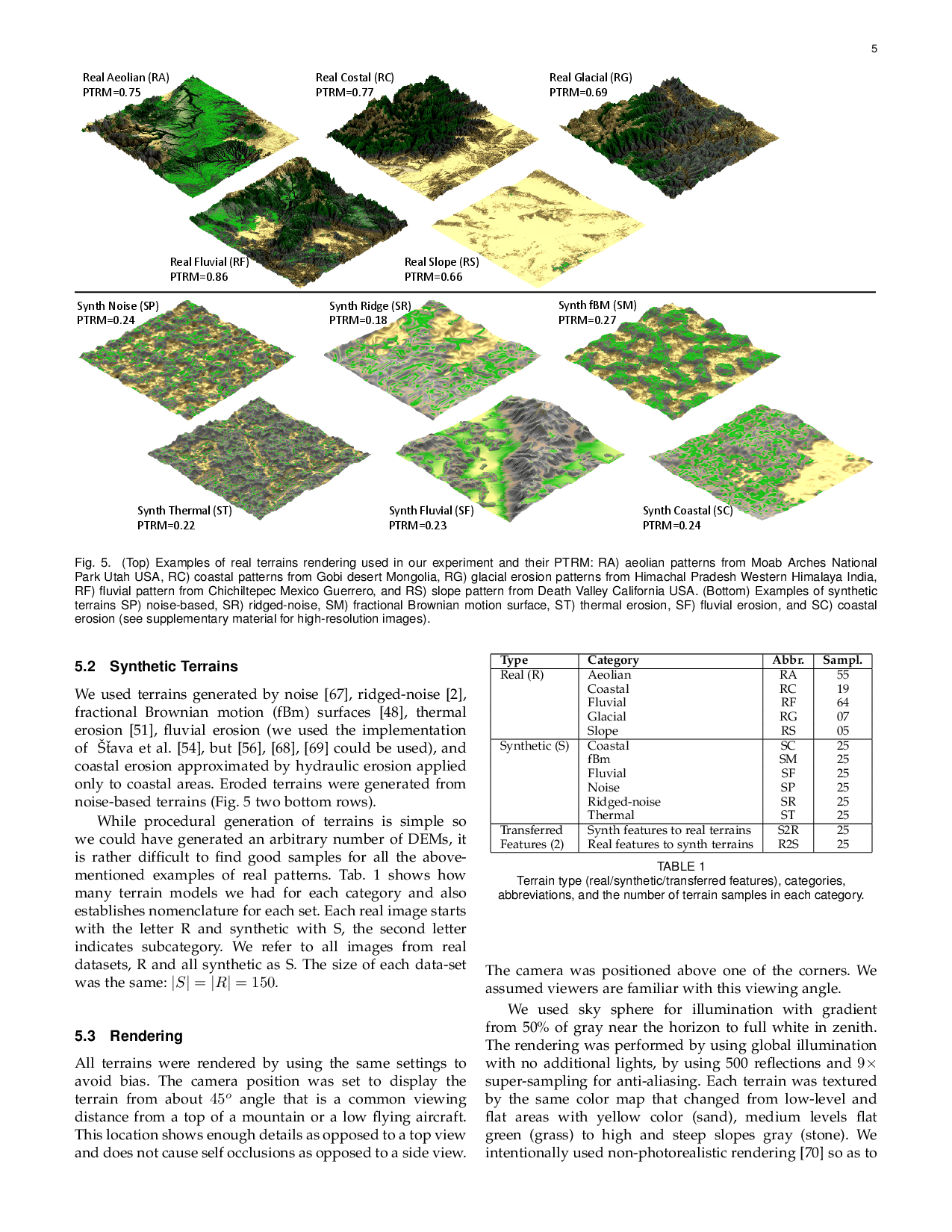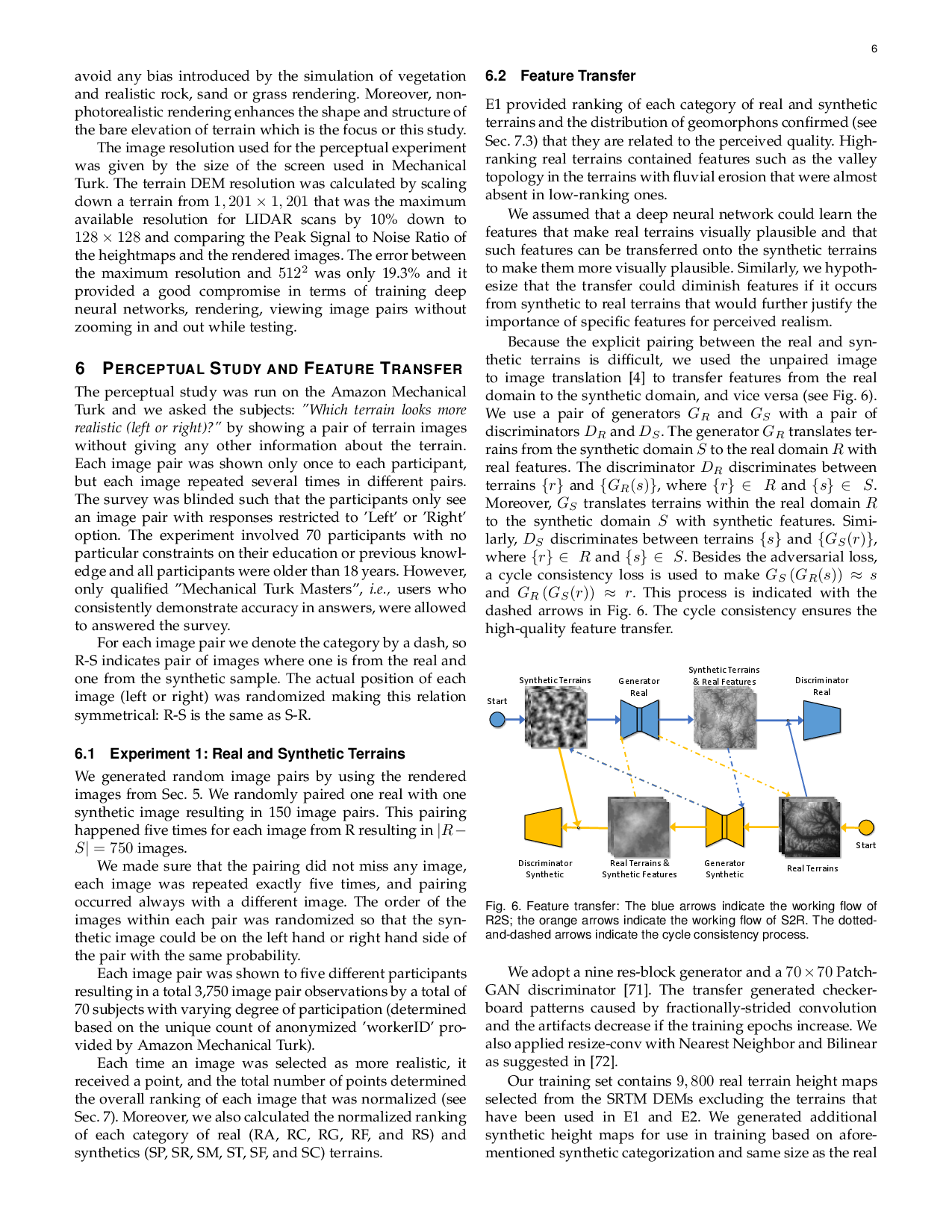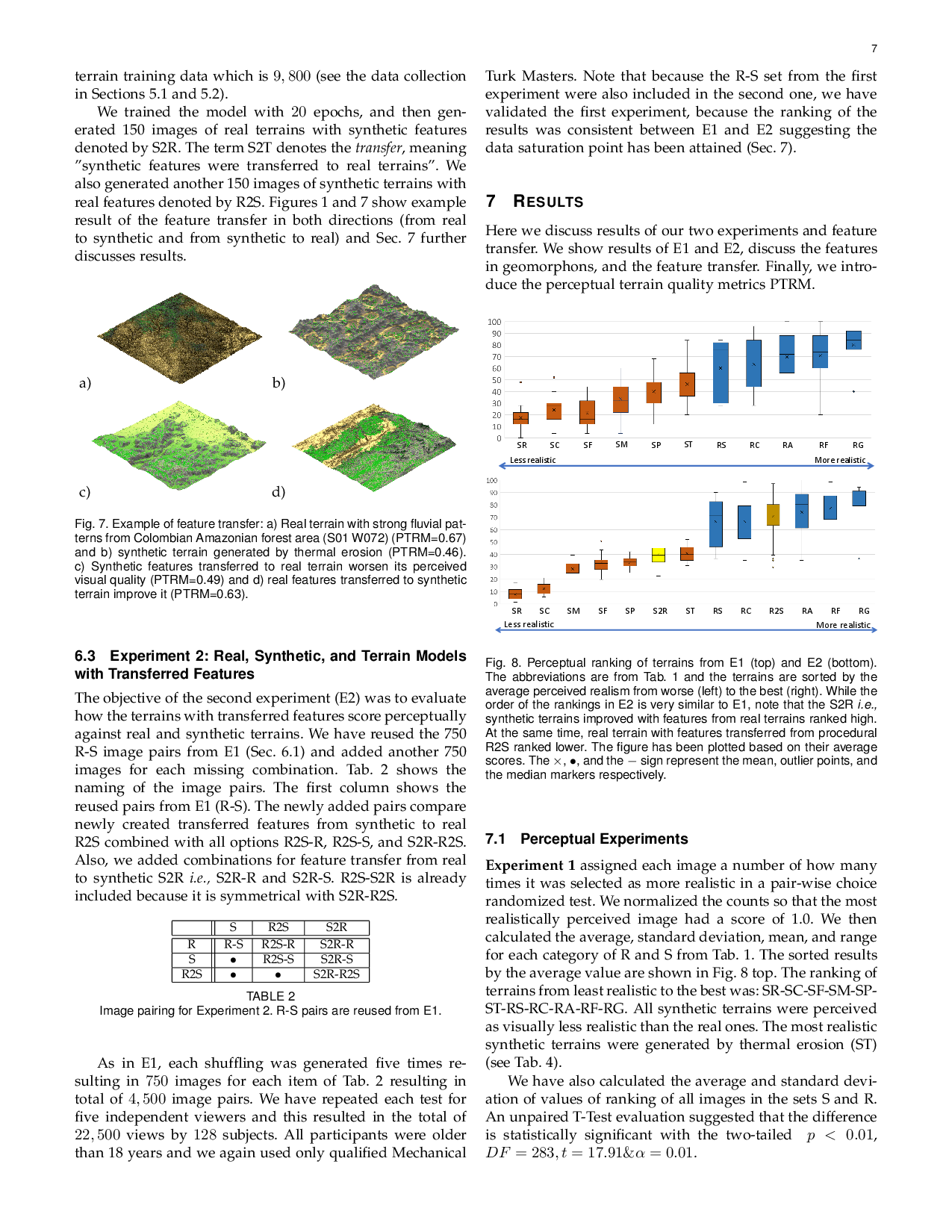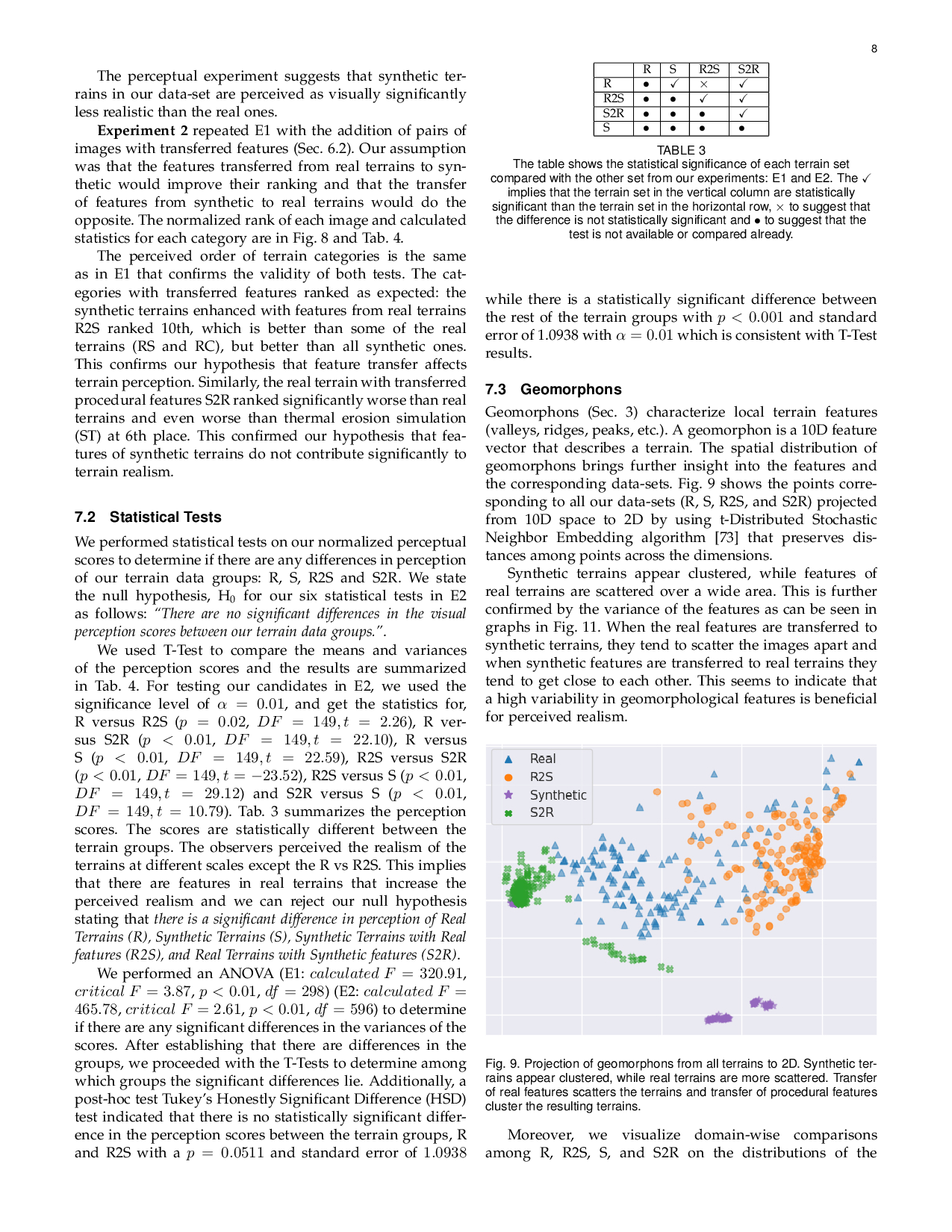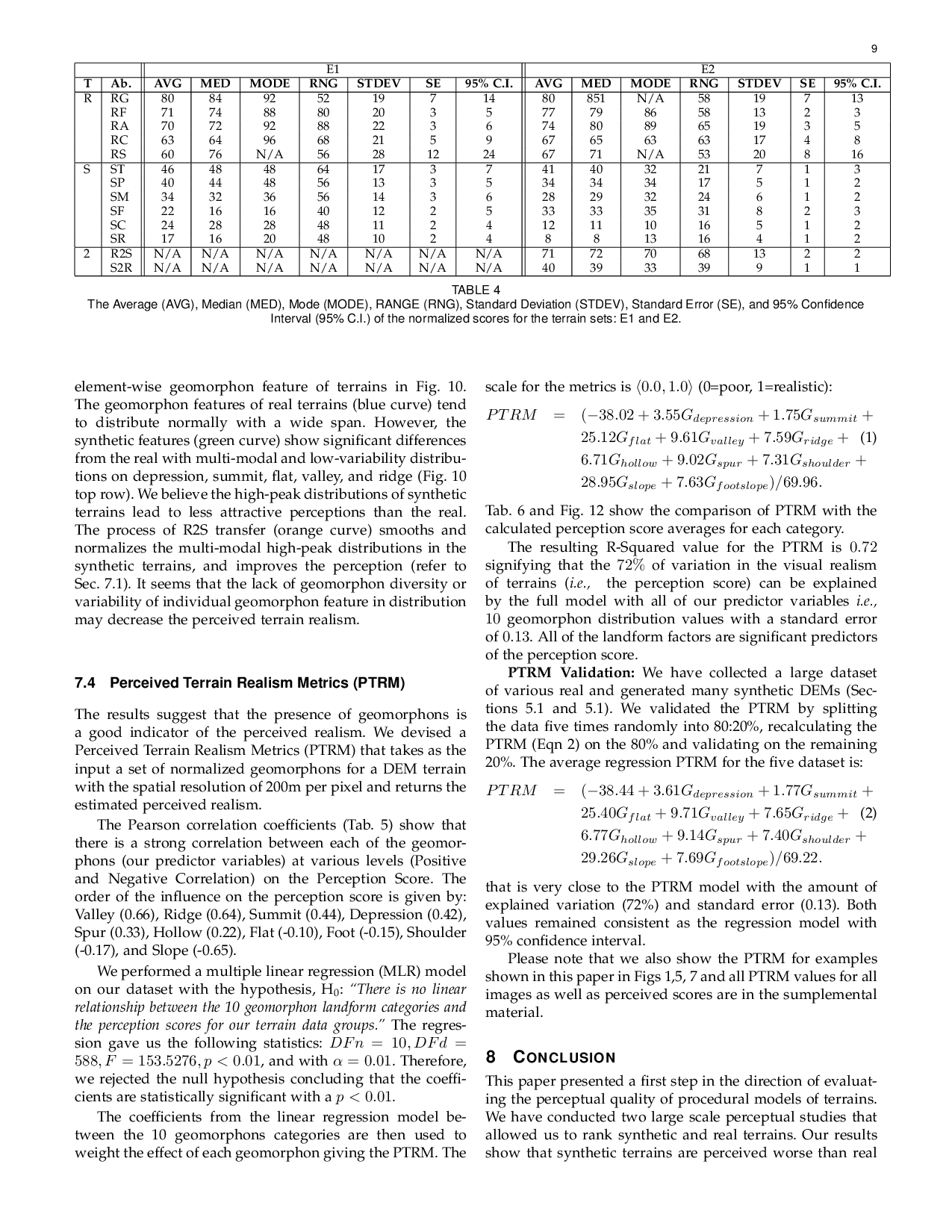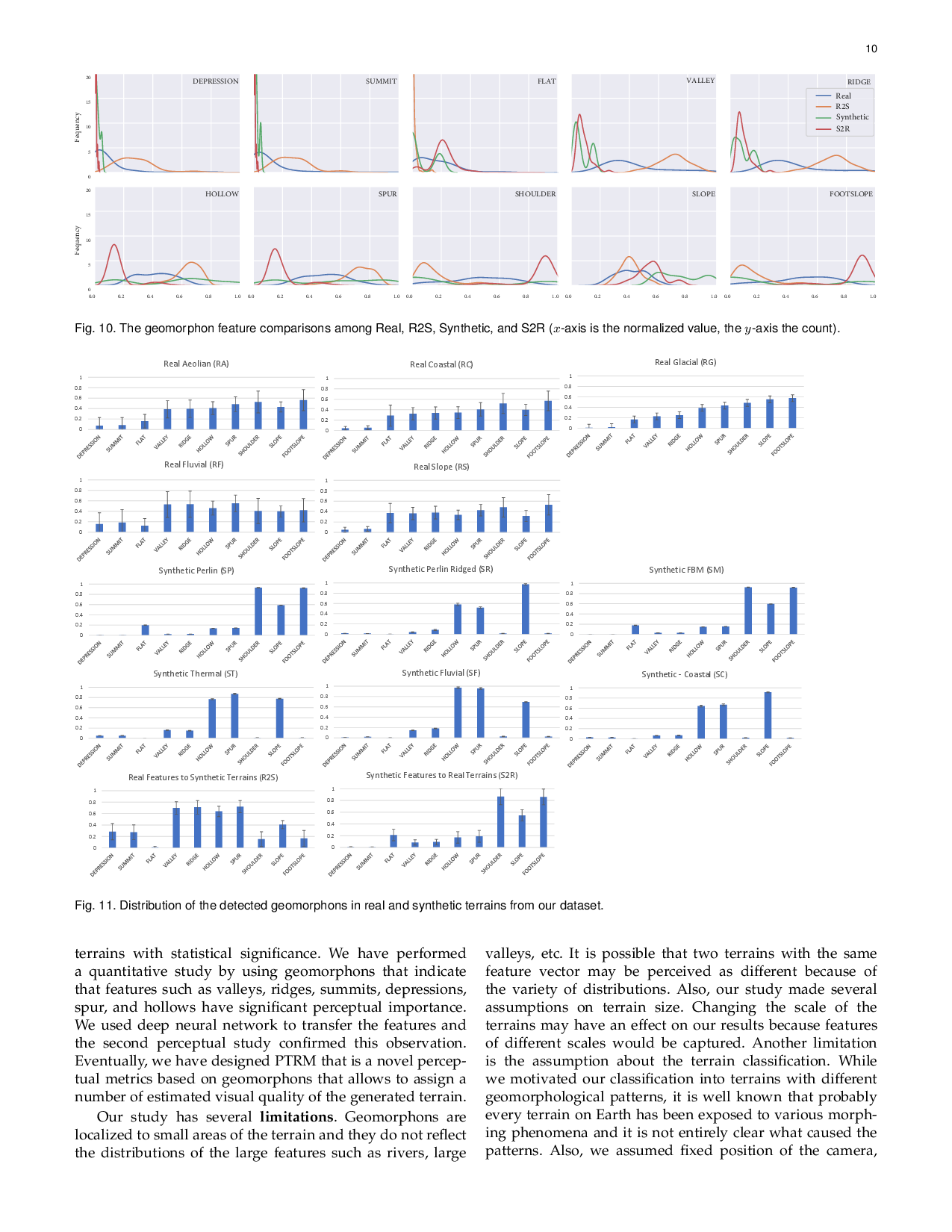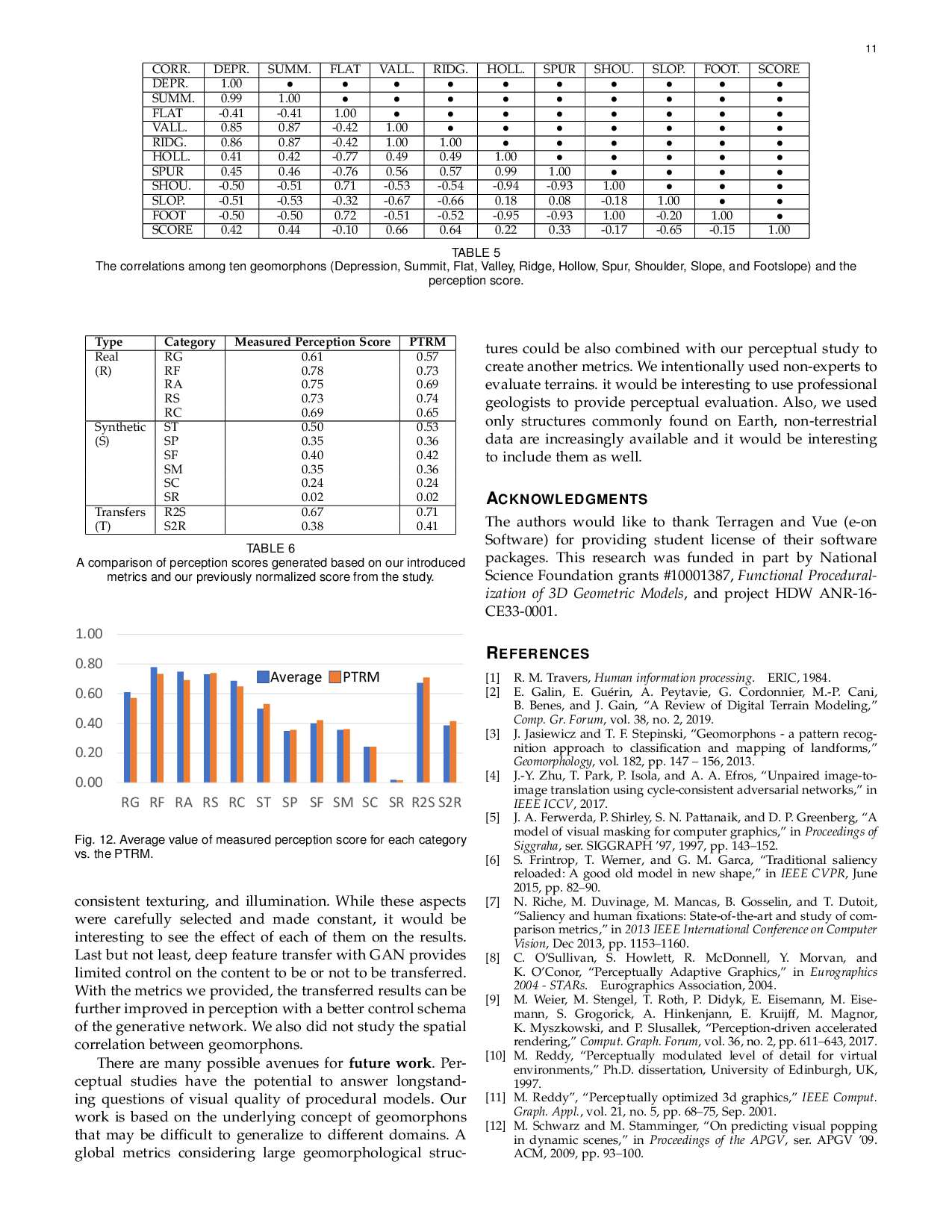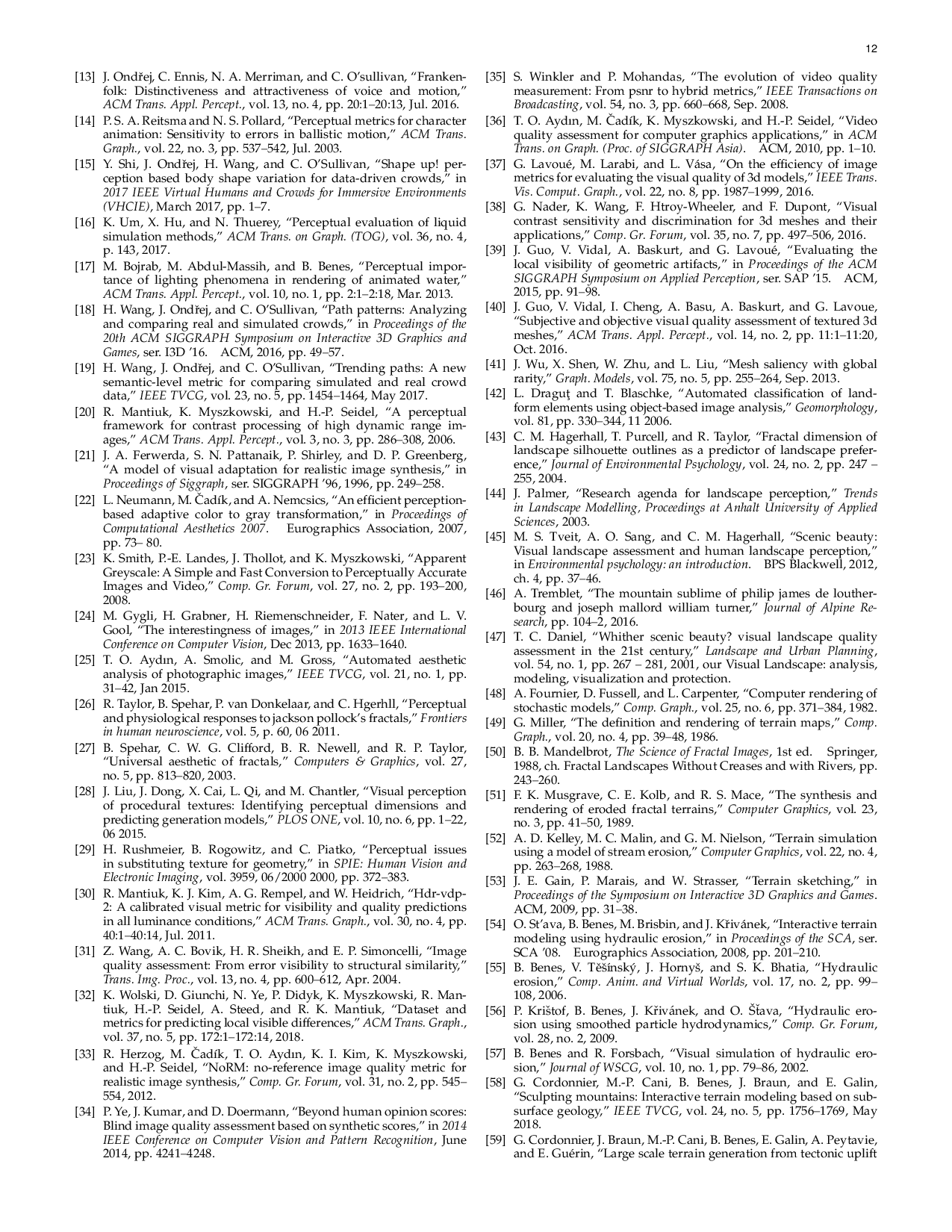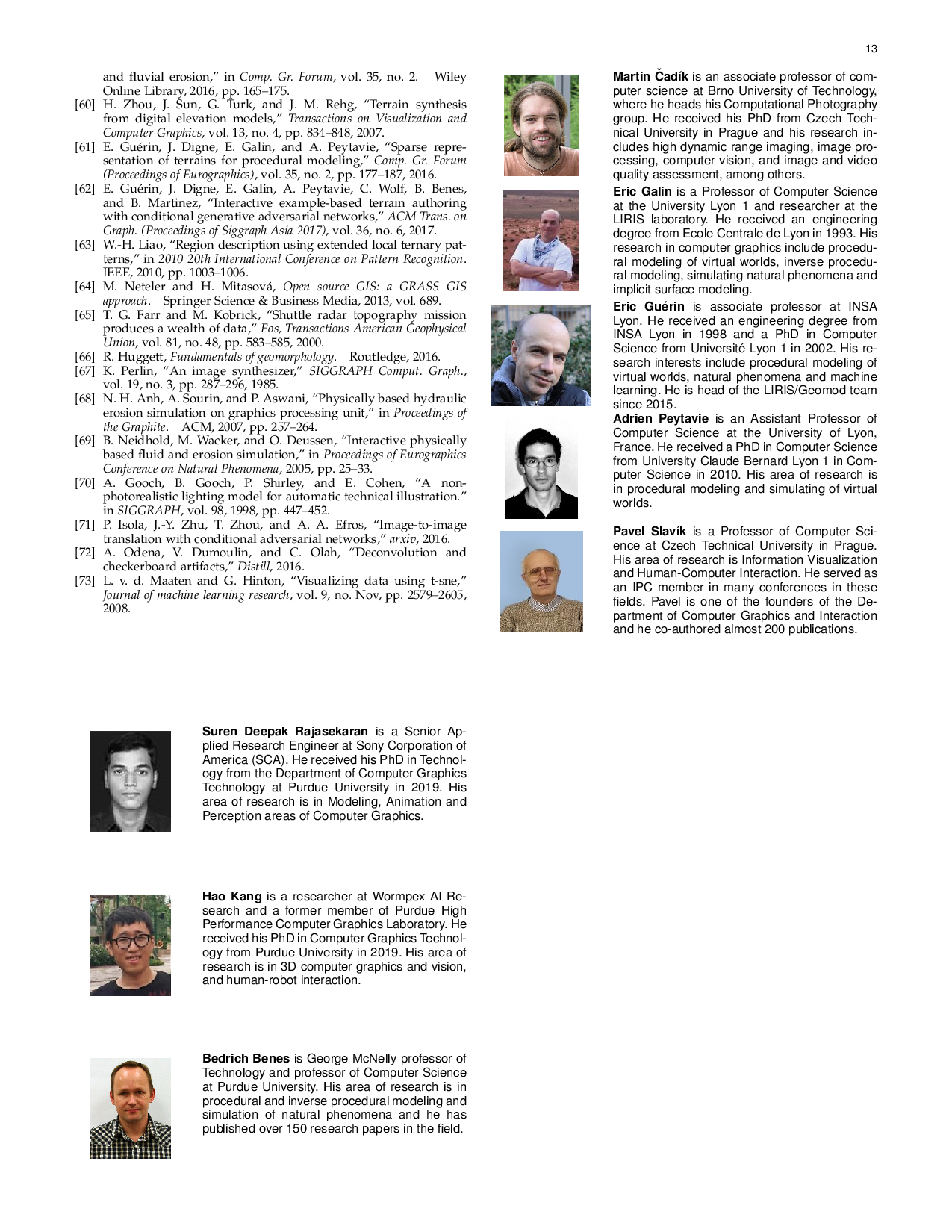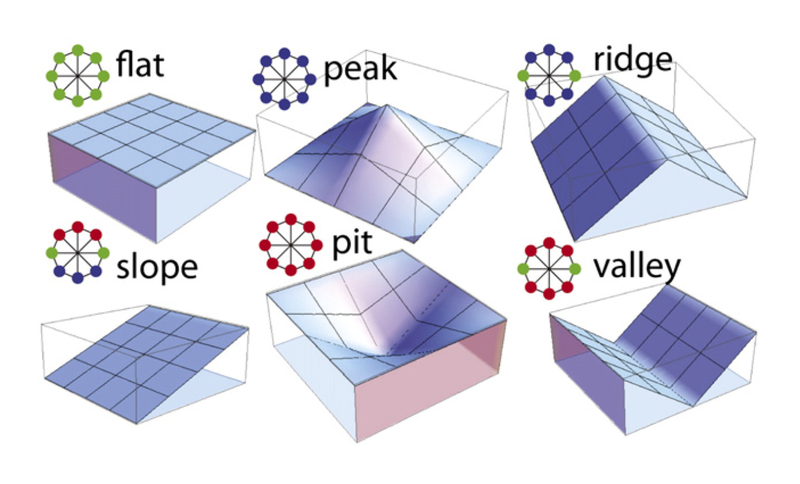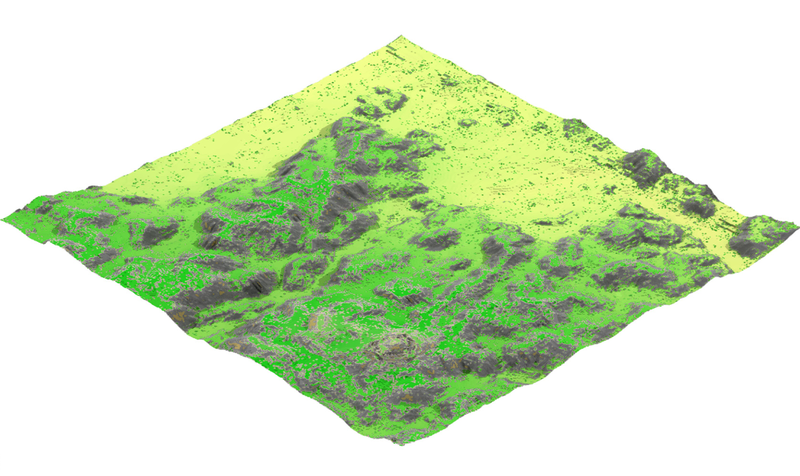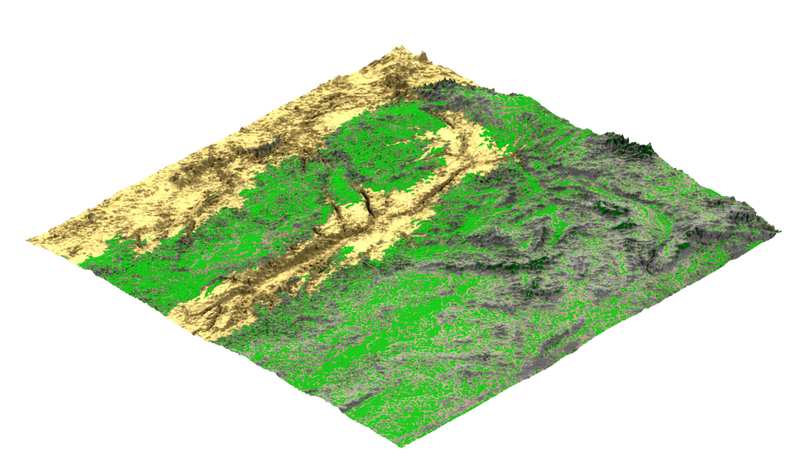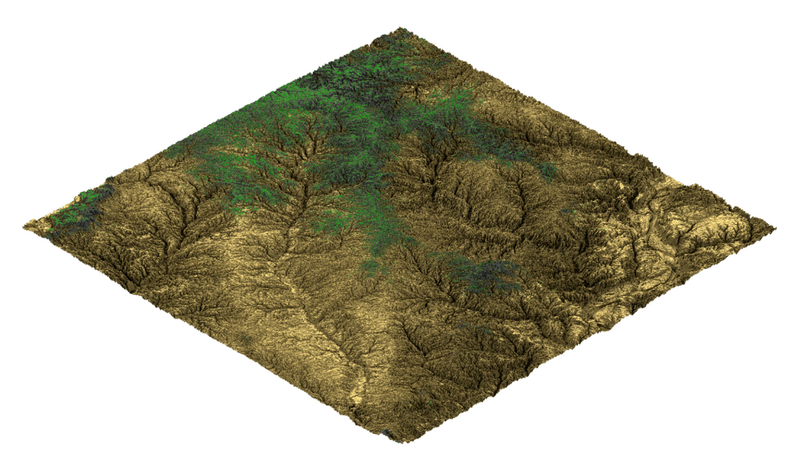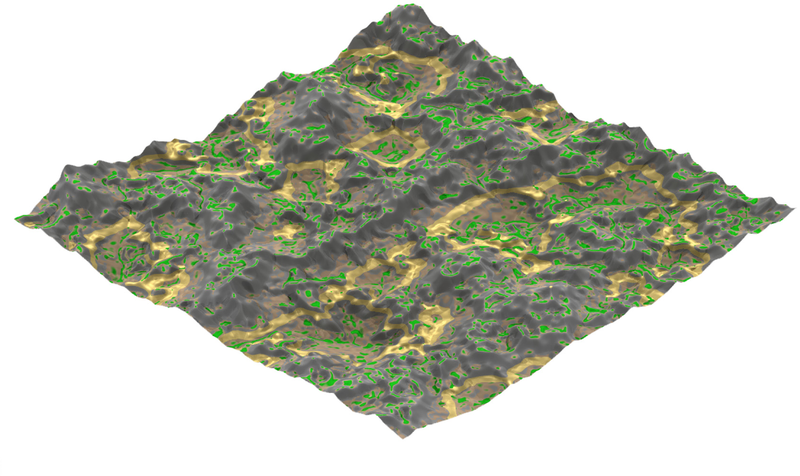PTRM: Perceived Terrain Realism Metric
ACM Transactions on Applied Perception 19(2):6, 2022
Terrains are visually prominent and commonly needed objects in many computer graphics applications. While there are many algorithms for synthetic terrain generation, it is rather difficult to assess the realism of a generated output. This article presents a first step toward the direction of perceptual evaluation for terrain models. We gathered and categorized several classes of real terrains, and we generated synthetic terrain models using computer graphics methods. The terrain geometries were rendered by using the same texturing, lighting, and camera position. Two studies on these image sets were conducted, ranking the terrains perceptually, and showing that the synthetic terrains are perceived as lacking realism compared to the real ones.We provide insight into the features that affect the perceived realism by a quantitative evaluation based on localized geomorphology-based landform features (geomorphons) that categorize terrain structures such as valleys, ridges, hollows, and so forth. We show that the presence or absence of certain features has a significant perceptual effect. The importance and presence of the terrain features were confirmed by using a generative deep neural network that transferred the features between the geometric models of the real terrains and the synthetic ones. The feature transfer was followed by another perceptual experiment that further showed their importance and effect on perceived realism. We then introduce Perceived Terrain Realism Metrics (PTRM), which estimates human-perceived realism of a terrain represented as a digital elevation map by relating the distribution of terrain features with their perceived realism. This metric can be used on a synthetic terrain, and it will output an estimated level of perceived realism. We validated the proposed metrics on real and synthetic data and compared them to the perceptual studies.

